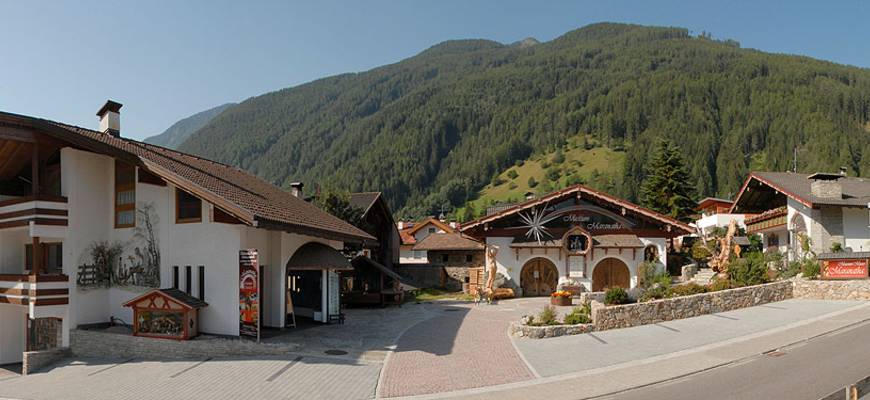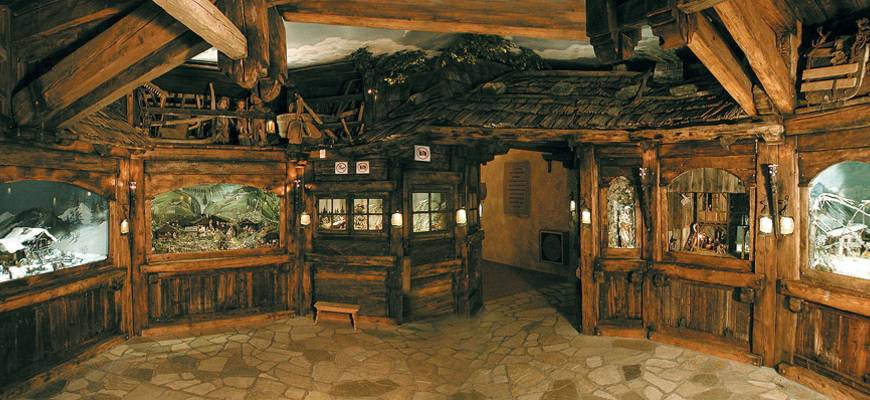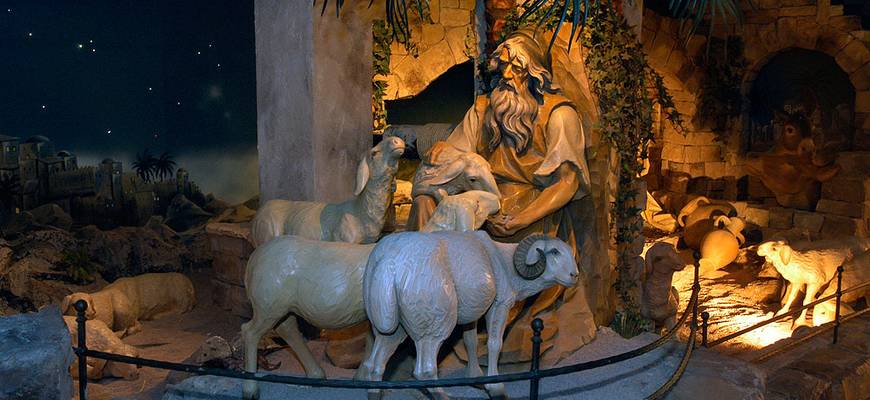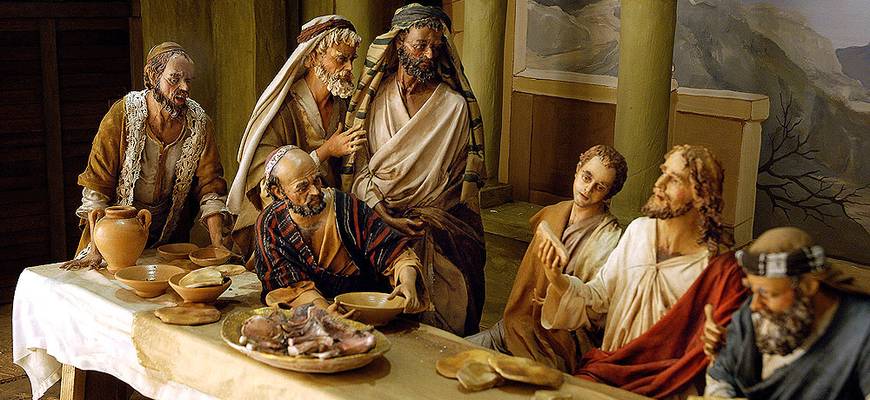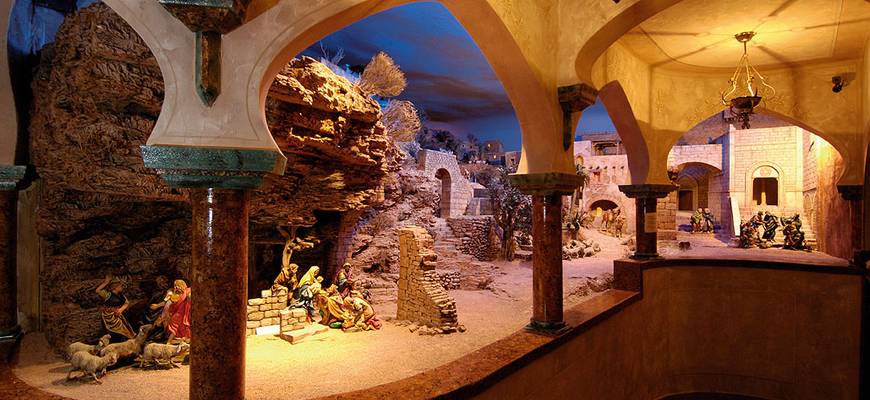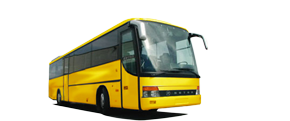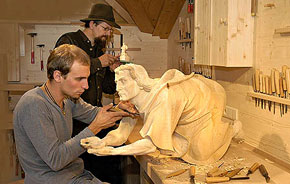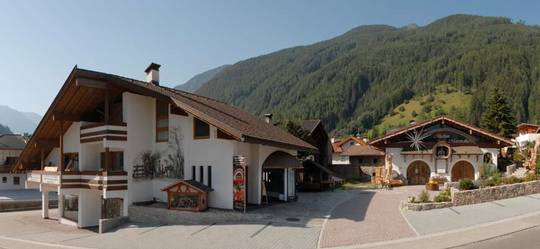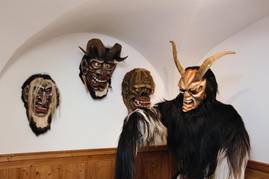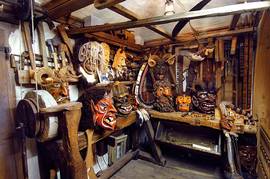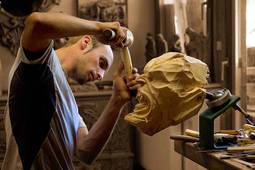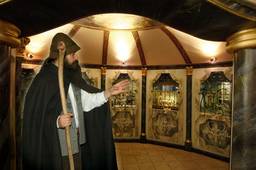Weißenbachstr. 17,
39030 Luttach-Ahrntal, Italy
Tel:+ 39 0474/671 682
Mobile phone: +39 340-4592300
E-Mail: info@krippenmuseum.com
Business hours:
Mon to Sat: 9 am to 12 am
and 2 pm to 6 pm
Sunday: 2 pm to 5 pm
Open all year
Prices:
€ 7,00 per person
Family card € 15,00
Welcome
The museum of the nativity:
The museum of the nativity in Luttach was opened in December 2000 after four years of building and is constantly changing its exhibits. The concept originated from the genial idea of Paul Gartner. The word „Maranatha“ is an Aramaic exclamation which was probably used by early Christians. Possible meanings are: „Our Lord has come“ (maran atha) or „Our Lord will come“ or – and most probable - „Our Lord come!“
In 2000 the Maranatha, the most imaginative nativity-scene-exhibition in the world, was opened in Luttach. Since then the museum has been expanded. The outside area, the concept of folk-art and nativity-scenes, as well as the wood-carvers workshop have been redesigned and redecorated. In the flower-garden and approx. 1,300 m² exhibition-area works of art from different countries are presented. Those who take a closer look can see the development of wood-carving from the beginning of tool-making and the root- and mask-carving to the modern sculpturing in Ahrntal of the present.
In two big showcases in front of the entrance of the artist-studio, household and farm equipment are presented in miniature form, also a miniature mill and carving tools. Visitors are astonished to see how many tools the farmers made themselves. Next to that a series of roughly carved heads shows the development of the art of carving.
In the Bildhauer-Garten(the sculptor's garden) there is a 500 year old pine tree trunk with many branches. It was found at the timber line at about 2000 m of altitude. It symbolises that mother nature is the best sculptor. Roughly or chainsaw carved figures and a well were placed next to it. The exhibition is completed by modern, stylized sculptures out of marble and stone. The farmers from Ahrntal owned and still own distant mountain pastures where their cattle grazed during the summer. Herdsmen tended the cattle so it did not get lost or graze on other pastures. This activity allowed the herdsmen time to carve different grimaces and masks from the roots and sticks from the area. They carved with simple pen-knives which every herdsman carried with him. These carvings were brought home in the autumn and hung up in the “Stuben”. That is how this craft became known and popular. Herdsmen and farmers started to carve in the winter too. Exhibits of fantastic root carvings are presented at the staircase to the mask Stube. They portray musicians with their instruments and farmers and farm workers with their tools.
One room is dedicated to mask-carving. Especially masks with witches or devils faces and suns were carved. Here one can follow the art of carving from a rough block to a simple, but impressive and frightening mask, also called „Larve“. The masks once used in the famous Nikolaus-play are significant. In this play masked figures appeared, like the small devil, the witch, death, the old man, the old woman and so on. The carvers wanted to create grotesque effects with their masks. Especially the devils masks are decorated in many different ways. As raw material one used pine wood which can be worked quite easily. Lime tree wood would be easy to process too, but it was hard to get and therefore expensive. The devils masks had horns. In the past they were carved from wood and glued or nailed on. Today cow or goats horns are used. The finished masks were painted with oil colours.
After the tour through the garden and the inspection of the masks we suggest a look at the modern art studio at the staircase to the carving workshop. In the semicircular entrance small nativity-scenes from the whole world are exhibited and also internationally reognized nativity-scenes from Leo Demetz, Bruno Lipp, Antonio Piscopo, Antonio Bigozzi and Giuseppe Armani. To enhance the studio even more some of these exhibitions are changed each year. On the first floor stands a traditional alpine nativity-scene from Lukas Troi and Katharina Edler Geiregger.
The special exhibition is also changed annually. In the commemorative year of Andreas Hofer 2009 an exhibition is dedicated to the Tyrolean fight for freedom, with oil paintings from Franz von Defregger, copied by Lora Marinova, also carvings and sculptures of the lokal artists Lukas Troi and Egon Oberkofler.
The artist's studio in which St. Johann's sculptor Lukas Troi, one of the most talented artists of the valley has been working since 2003 is used for various activities. Interested spectators can watch the artist while he works. Paintings reliefs and figures are restored, assignments are designed and created and it is also used as an exhibition room.
The guided tour through the museum is lead by the visionary Paul Gartner, assisted by the artistic supporter, the musician, composer, text writer and guide Hubert Leimegger.
Should visitors have to wait, they can watch a film about the museum in the panelled „Zirbelstube“on the right hand side of the main entrance.
Maranatha – Europe's charismatic world of nativity-scenes

